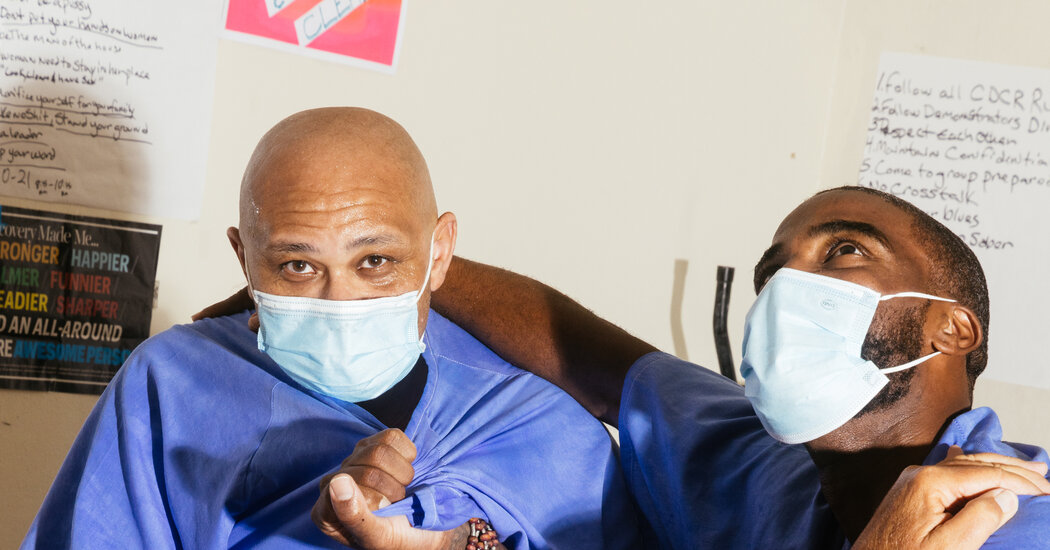April 2020, Gales told me on the phone how he and his fellow students, who are now confined most of their time in cells in the prison segregation area, continue to work on dance moves that fit into these confined spaces. “We really wish we could do TikTok,” he said. “We’re going to take over the world.”
That June, Webb told me that he and Gales now sometimes dance together in the yard. He is also allowed to tour the art room, and throughout the year, some of his paintings are on display in Los Angeles galleries and online. His mother, Gina, was amazed by his art. “It was his pain like I had never seen before,” she said.
Plans to restart dance classes kept getting scrapped for much of 2020 and 2021. Most of the gang members were transferred to other prisons one by one. Because of Webb’s record of good conduct, he was transferred to a lower security facility in Chino. Gales was released on parole in April 2022, and the governor of California commuted his sentence in recognition of his work to change himself.
In Chino, Webb asks Roy and Chambers to restart the dance lessons there. In fall 2021, they did, this time teaching the course together. The focus shifts more to the trauma and how it survives in the body. Chamblas recalls a trust exercise with a new student who was supposed to close his eyes when Chamblas weighed in.
“His body felt so emotional,” Chambers said, “and then he said his body wanted to beat me.” The exercise released a repressed memory of childhood abuse.
In a class I visited in September 2022, several men spoke about having been abused and how uncomfortable they were with physical contact. “I can’t stand anyone touching me,” Thomas Boleyn said. Convicted of murder in 1981, he had been a member of the Aryan Brotherhood for more than 40 years, violently segregating San Quentin and other prisons.


